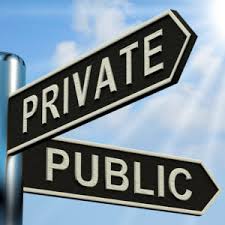Karnataka is turning into a hot spot for higher education in India. Over the past decade the region has increased the number of higher education institution three-times. It is time to bring them on par with international standards and for this there is a need for skilled and quality manpower. Apart from professional colleges there is a steady growth in the Art & Science colleges in the public and private sector.
The statistics reveals that there are
· 28 Government run universities
· 14 Private universities
· 1 central university
· 11 Deemed universities
· 9 Institutions with national importance
· 190 Engineering colleges
· 41 dental colleges
· 45 medical colleges
· 750 Arts & Science colleges
· 5,235 Pre university colleges
· 48,909 Government Schools
· 19,670 Private schools
While assessing their capacity and quality they cater to students, in comparison with international institutions, there is a big gap to be filled. The irony is that despite a high number of state run universities and private players, only seven institutions were able to apply for Prime Minister’s Office’s scheme. The number of engineering colleges is high as the state produces more than 60,000 engineering graduates in a year and these are not employable.
The biggest challenge lies in bringing public and private institutions on par with one another, interms of infrastructure and quality. The sorry state of affairs prevails in the state education system, particularly in the primary and secondary education.
The need to increase the private institutions while restricting the rapid commercialism of education. People do not mind paying high fees or heed to commercial forces but all they want is better resources. It is sad to see the public educational system being degraded as second rate system when compared to private system.
The Jnana Ayoga promises quality education through motivated teachers and advanced technology. It is necessary for the state to invest in terms of manpower and funds to promote education and make it on par with private educational system to create a level playing ground for competition.
Despite valuable efforts in this direction, the outcome still remains a question. There is not much of attention given to fashionable events or flashy programmes. All this leave it nowhere near acquiring depth of knowledge.
It is a well known fact that the private institutions make good money even in the pre-primary section, yet not focusing on child personality. The issues are not known to the policy makers as they are not mentioned in the official documents. The socio-economically backward children are left outside the periphery of education, say experts in the field.

Comparison between private and public educational sectors
The private sector is growth at a greater speed leading to the shutdown of public schools. The students in the public schools are getting admissions in private schools under the Right to Education quota. It is tough to compete with private run institutions as the preference of the students to get admissions in private institutions is increasing. The state has to focus on the quality and skills, thereby putting an end to burgeoning universities in the public and private sectors. The major goal is to provide adequate infrastructure in the public schools and colleges thereby controlling the private players from entering into the primary level, as their mindset is purely commercialization.
In Karnataka, 76% of the population is literate and the state boasts of having the best institutions like the Indian Institute of Science, Indian Institute of Management, National Institution of Technology and National Law School of India University. Moreover, the state holds the record for recruiting highest number of teachers in the university, primary and secondary school and colleges. The schools and colleges in the state are divided into two sections, the Government Aided and the Private institutions. The courses are affiliated to the CBSE or the ICSE board. The state encourages parents to enroll kids in the schools and they offer books and other utilities to kickstart their education process. The ultimate motive of the state is to provide education to all and cut down on the dropout rate. To achieve this, the schools have started mid-day meal scheme, helping in up-grading education in Karnataka.
Find More About : Second Languages Are Significant For Success

